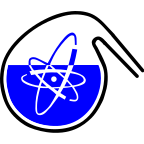Speaker
Description
Large-scale experiments which have been or are being established in order to answer some fundamental questions of nuclear physics, such as the SuperNEMO experiment, have been recently arising the need for radiopurity measurements on the nBq/g or even sub-nBq/g levels. One of the biggest challenges of these experiments is to reduce the background radiation to minimal values. The isotope source deposited on a foil to be used in the SuperNEMO experiment, which shall be exclusively devoted to the search for the neutrinoless double beta-decay, is made of enriched 82Se powder. Despite the fact the 82Se powder material have been purified before being further processed, it still contains trace amounts of natural uranium and thorium. 238U and 232Th decay to short-lived beta emitters (214Bi and 208Tl, respectively), which are very dangerous because the energy of their beta-electrons is higher than the double beta-decay energy of 82Se. Therefore, precise determination of 238U and 232Th in the source is crucial for the evaluation of the contribution of their progenies to the background signal. Several methods have been exploited for low level analysis of uranium and thorium in various construction materials, though it is assumed that the proposed detection limits could be reached only with the use of the state-of-art mass spectrometric techniques, i.e. inductively coupled plasma mass spectrometry (ICP-MS) and accelerator mass spectrometry (AMS). However, both ICP-MS and AMS generally require pre-concentration of the radionuclide of the interest and its almost complete separation from the original sample matrix. Selenium, uranium and thorium can be separated from each other by e.g. solid phase extraction (SPE) or anion exchange chromatography. Here we shall present results of testing of straightforward procedures for separation of 238U and 232Th from selenium using UTEVA resin (TrisKem) and Anion Exchange resin (Cl-) form (TrisKem). Modelled samples were prepared from commercially available high-purity elemental selenium powder (99.999%; Alfa Aesar), whose quality was checked by low-energy mass scanning, and spiked with 232U and 229Th. Overall radiochemical yield of the procedures was calculated from alpha spectrometry determinations of 232U and 229Th, as well as from gravimetric measurements of selenium.

